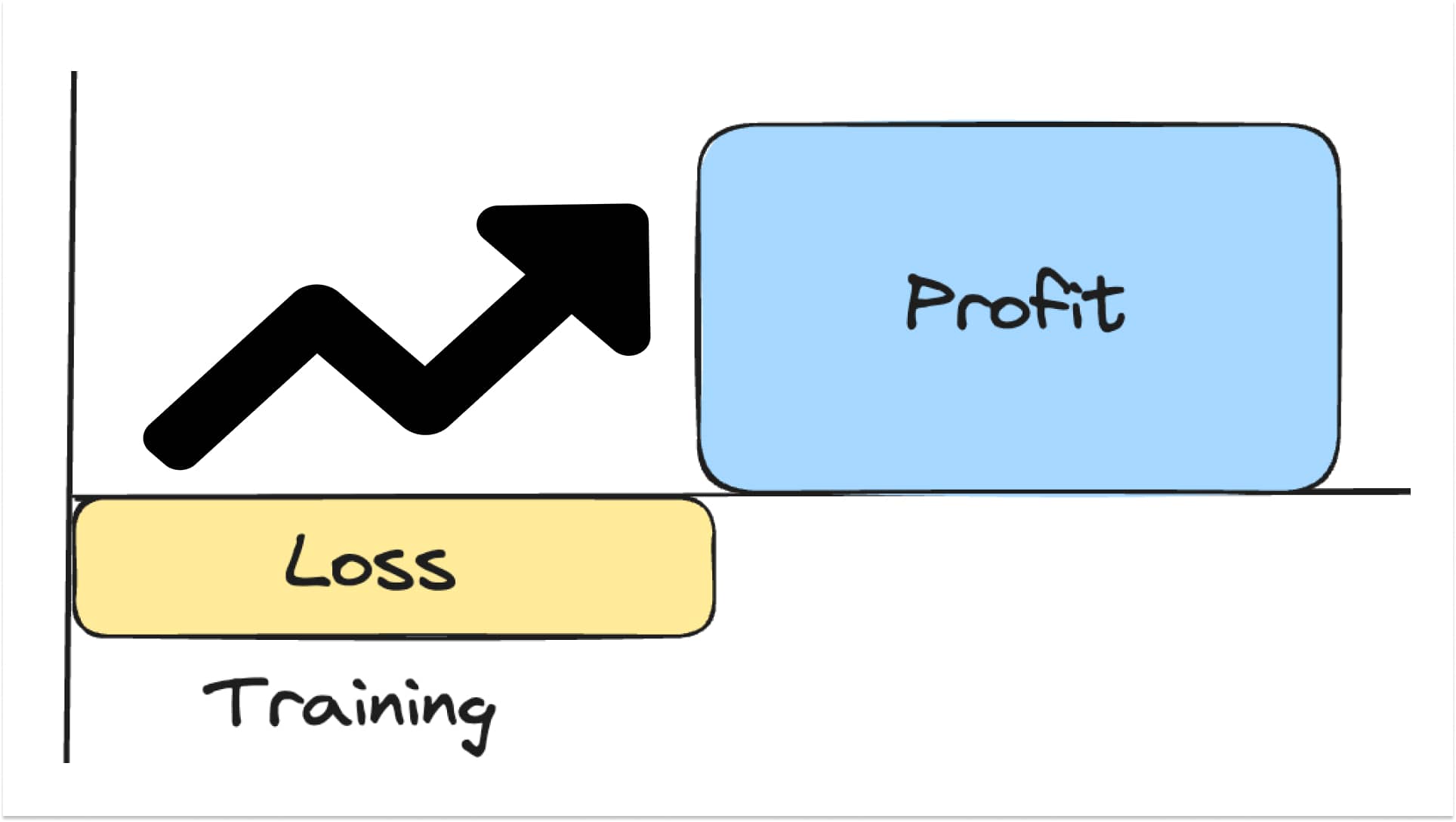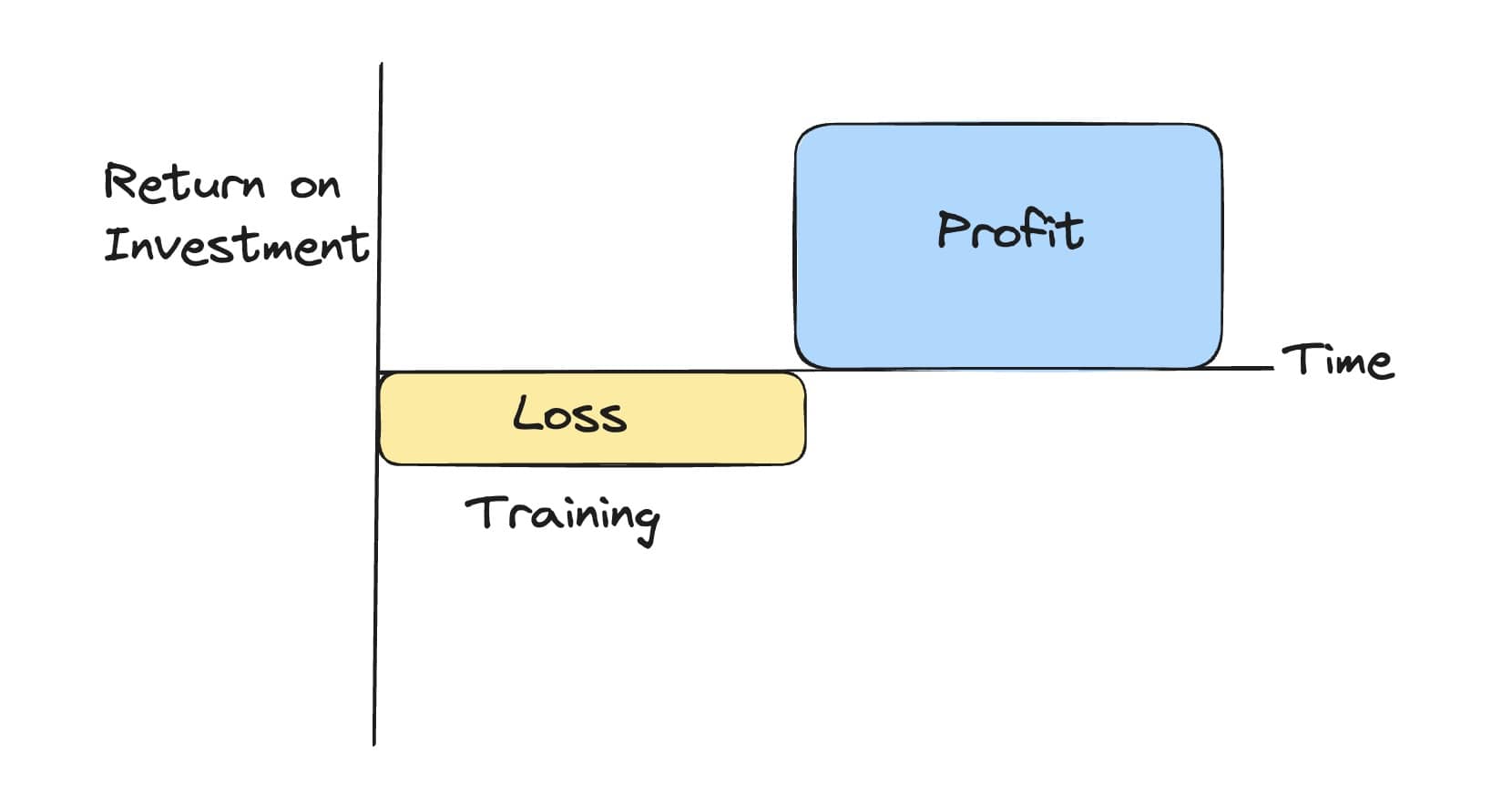Every junior developer should know this graph

In today’s competitive tech landscape, we often hear phrases like ”[our language] doesn’t have enough Juniors.” or “There’s a shortage of decent developers.” As a business owner and product development expert, I’d like to shed some light on this issue and explain the economics behind hiring and training junior developers.
My name is Till Carlos and I document how my team builds products. And today we are talking how business owners think about hiring and training junior developers.
Part 1: The Economics of Hiring Junior Developers

This graph represents the timeline of employment, with time on the x-axis and return on investment (ROI) for the business owner on the y-axis. Here’s how it typically breaks down:
Initial Investment Period: When a junior developer is hired, there’s usually a period where the business goes into the red. This represents the training period and initial onboarding, where the company invests time and resources without immediate returns.
Break-even Point: After some time, the junior developer’s output starts to generate positive ROI for the company. This is when their contributions begin to outweigh the costs associated with their employment and training.
Positive ROI: Following the break-even point, the junior developer’s output continues to increase, providing a growing return on investment for the company.
Leverage: One unique aspect of developers is that they work with inherent leverage. Their code and use of technology can multiply their input to produce significantly greater output over time.
Salary vs. Output: The business must continually pay the junior developer’s salary, regardless of their output. The profit for the business lies in the difference between the salary paid and the value generated by the developer’s work.
Senior Developer Comparison: In contrast, hiring a senior developer typically involves a shorter onboarding phase and higher immediate costs, but also faster and higher ROI.
Part 2: How junior can improve the success
Now that we understand the business perspective, let’s explore three key areas where junior developers can take action to improve their chances of being hired and succeeding in their roles.
Dial 1: Learning Time
Reducing the learning time is crucial for juniors. The faster you can become productive, the more attractive you are to potential employers. Here are some strategies:
- Invest personal time in learning: Dedicate weekends and evenings to improving your skills.
- Work on side projects: Apply your learning to real-world scenarios.
- Stay updated with industry trends: Continuously educate yourself on new technologies and best practices.
By demonstrating your commitment to rapid learning, you can show potential employers that your “investment period” will be shorter, making you a more appealing candidate.
Dial 2: Long-term Payback
Businesses invest heavily in training junior developers. Showing your commitment to long-term growth within the company can make you a more attractive hire. Consider the following:
- Communicate your career goals: Express your interest in growing with the company during interviews.
- Be open about salary expectations: Understand that your initial salary may be lower, but express your willingness to prove your value over time.
- Show loyalty: Demonstrate that you’re not just looking for a quick stepping stone to another job.
By aligning your goals with the company’s long-term interests, you increase your value proposition as a junior developer.
Dial 3: Learning Cost
Reducing the cost of your learning curve to the company is a powerful way to make yourself more valuable. Here’s how:
- Utilize AI tools: Use resources like ChatGPT to review your code before submitting it for human review.
- Be proactive in problem-solving: Try to resolve issues independently before asking for help.
- Efficient communication: When you do need help, come prepared with clear questions and potential solutions.
By minimizing the time senior developers need to spend on your training and code reviews, you reduce the overall cost of your learning process to the company.
At our company, we’re putting these principles into practice. We’ve just started a new project with two junior developers, and we’ll be documenting our journey through our sprint kickoffs. If you’re interested in seeing how this plays out in a real-world scenario, subscribe to our channel for updates on our progress.
